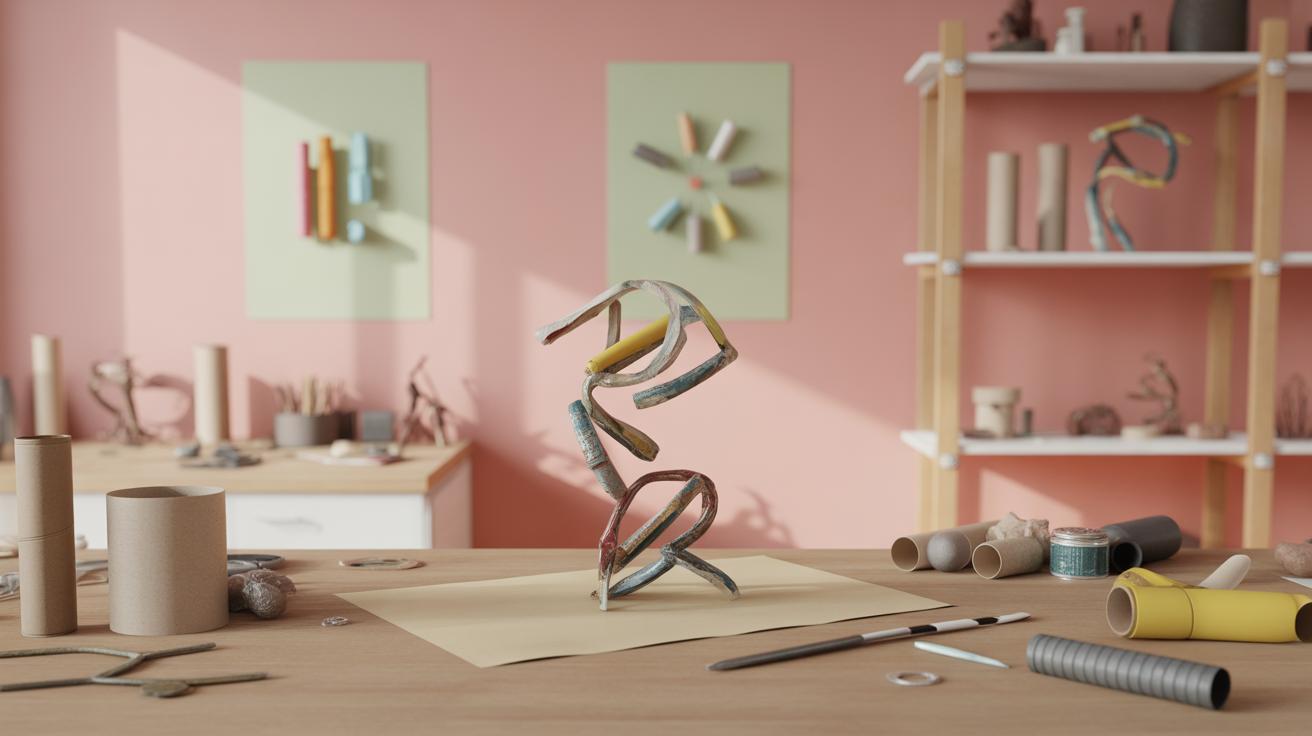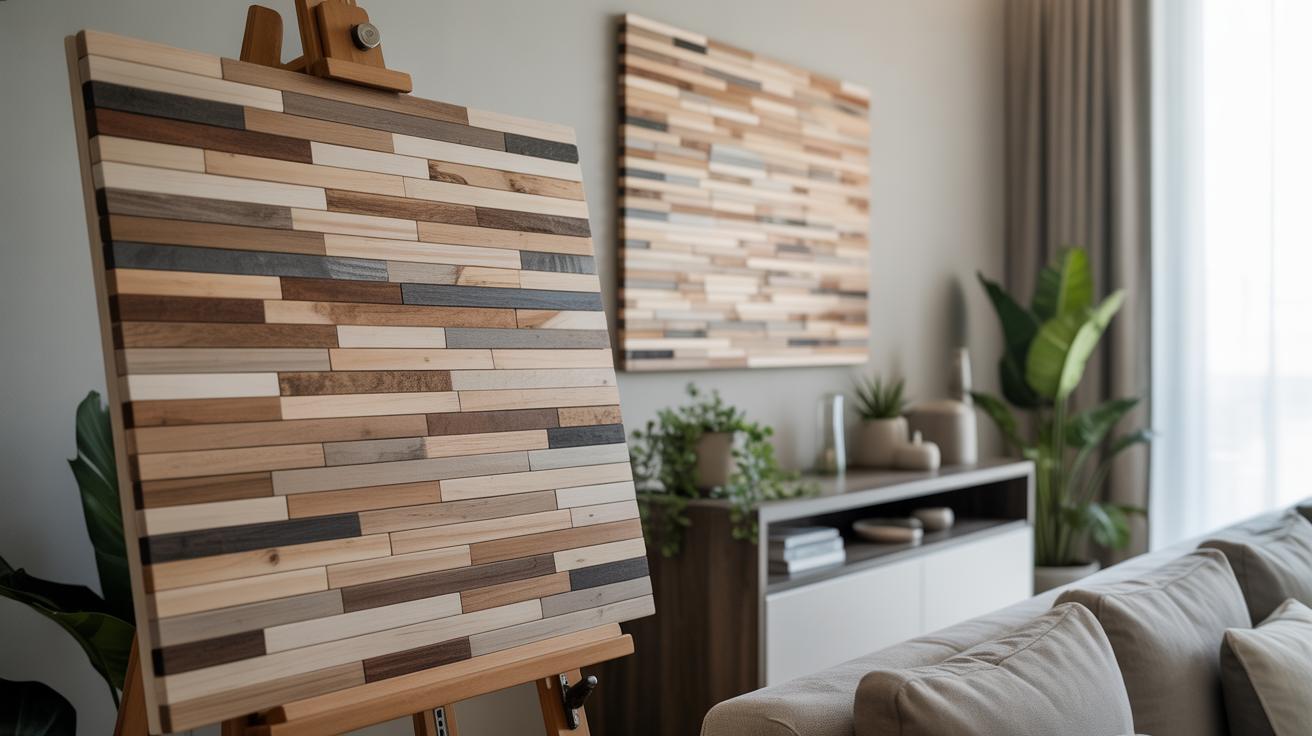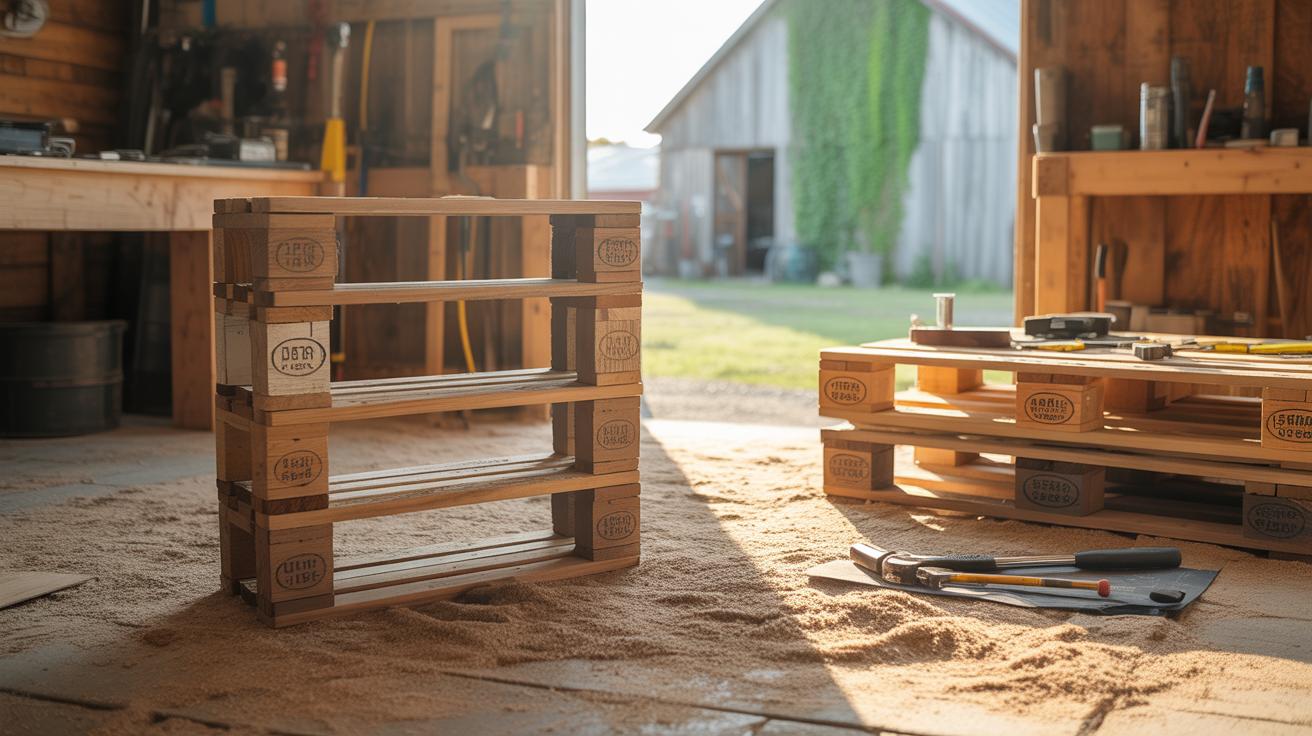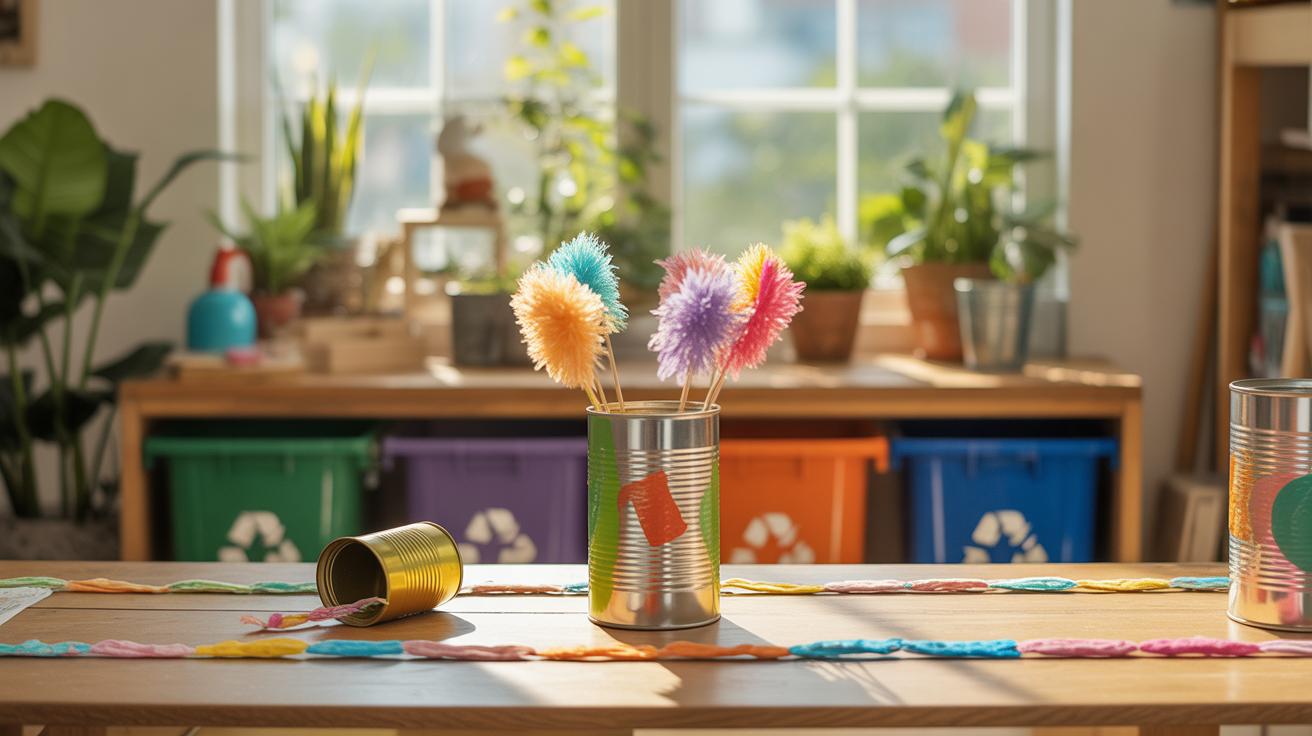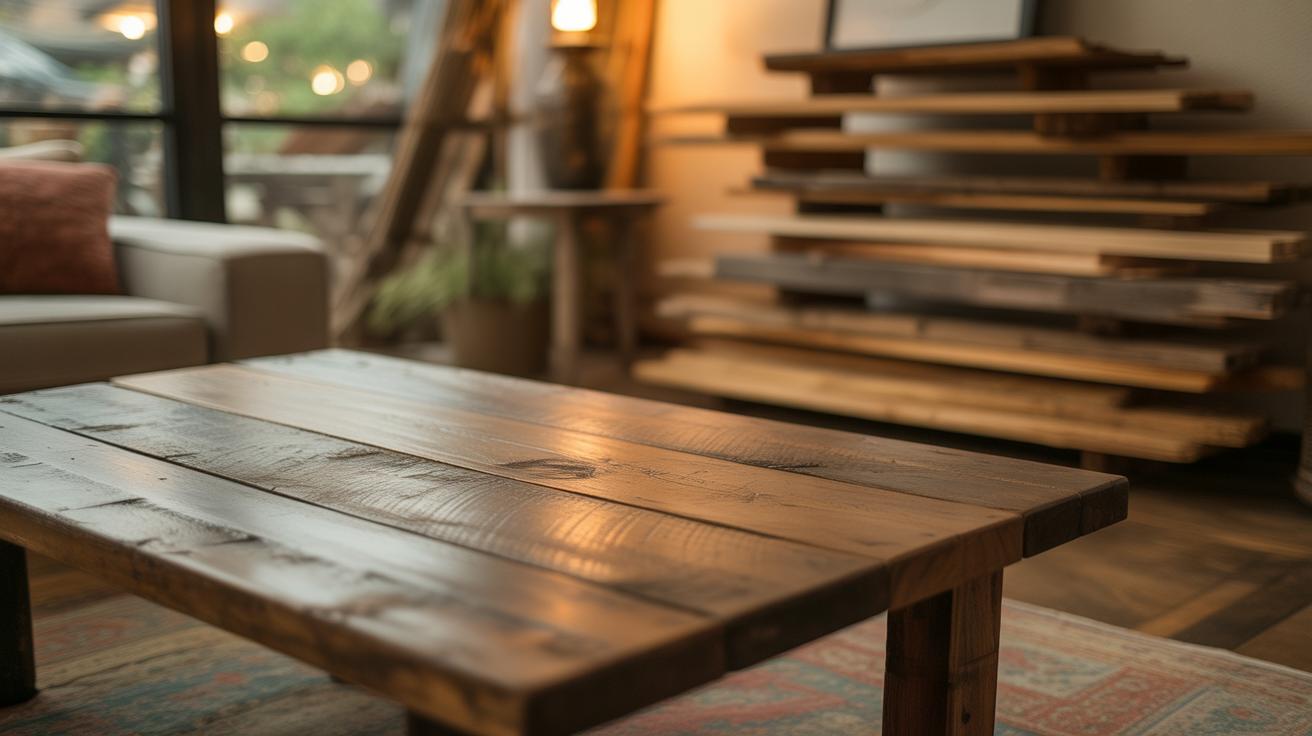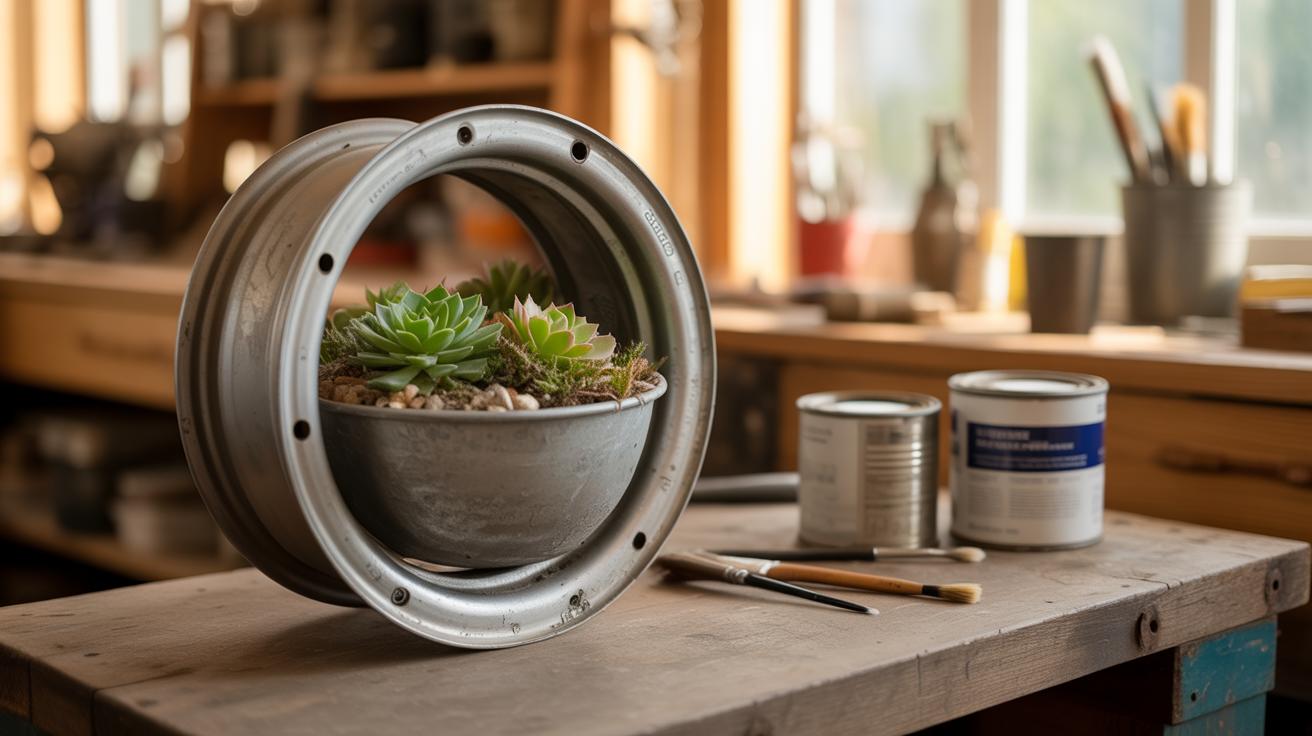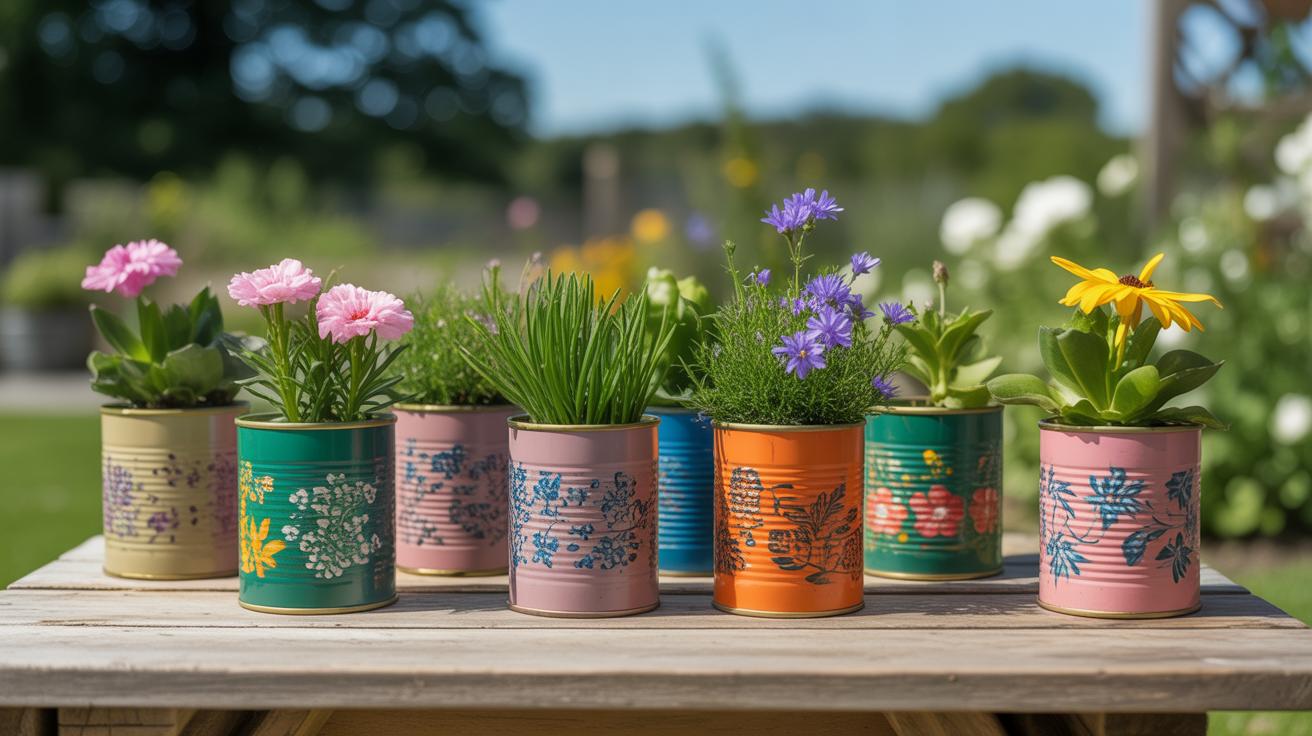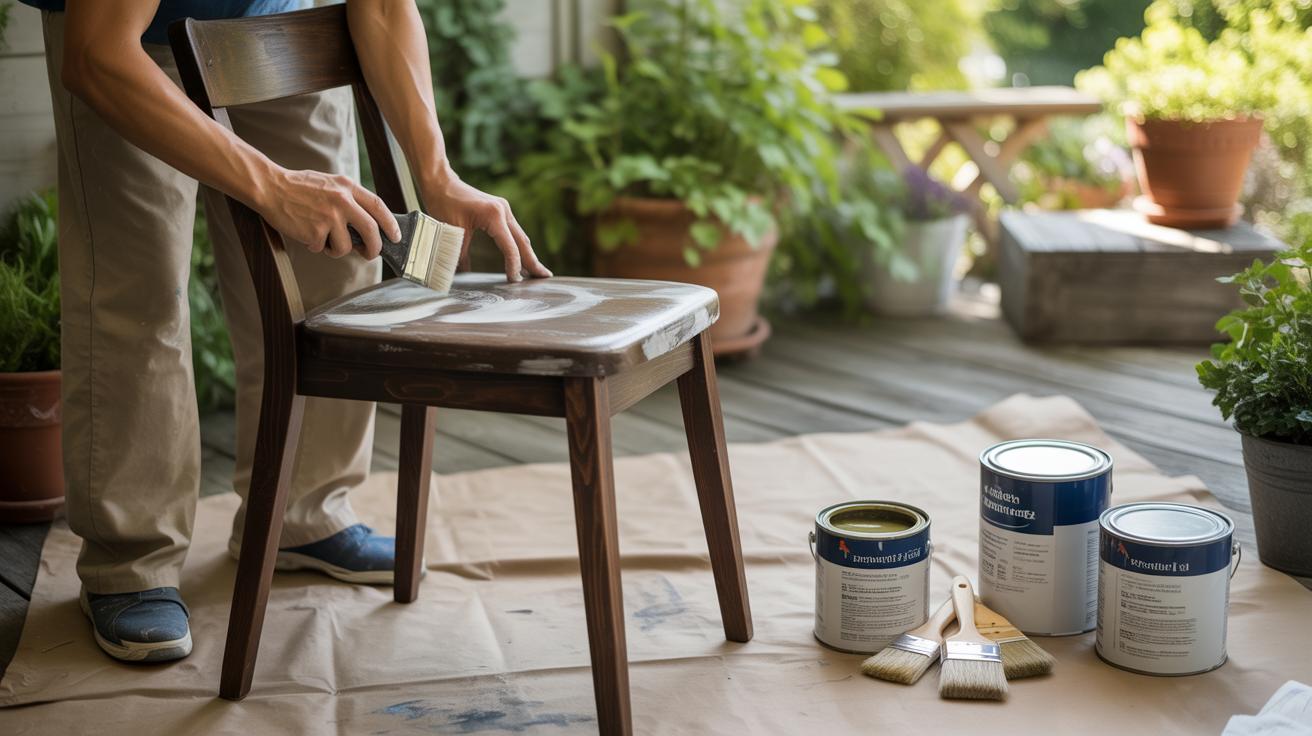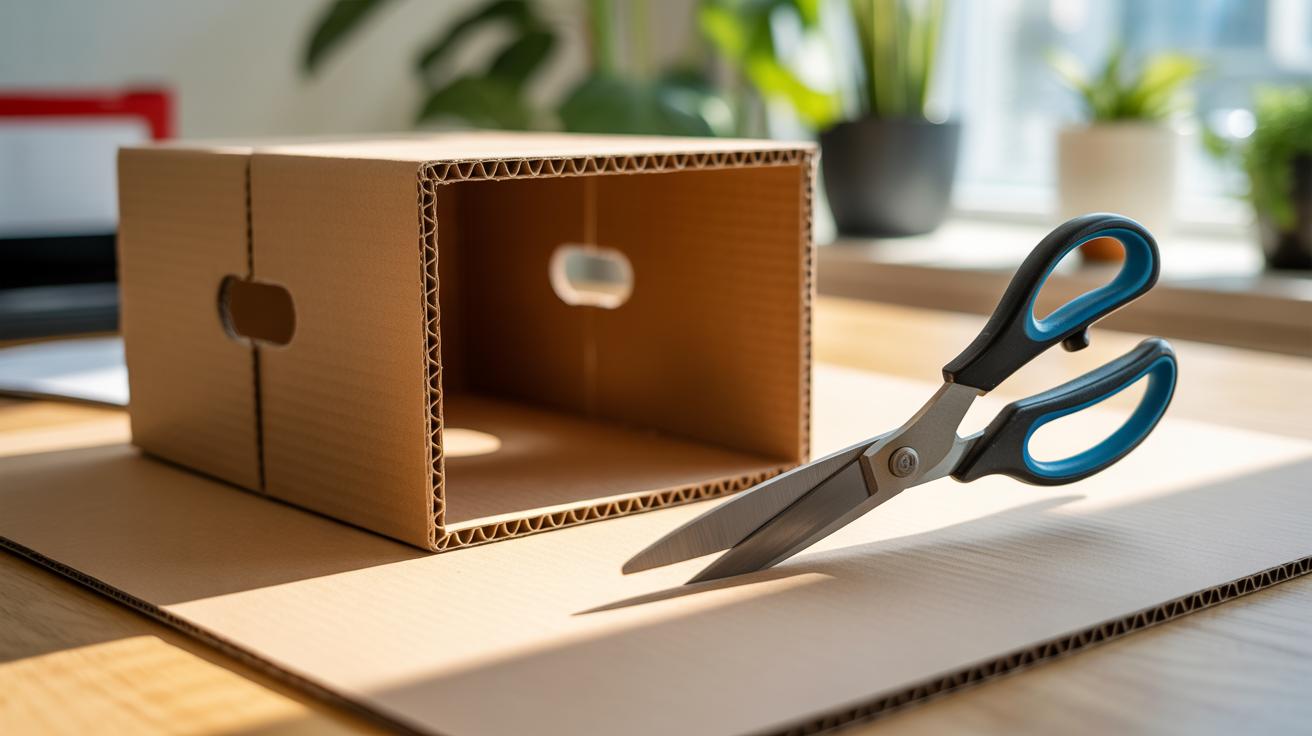Introduction
Recycled art uses materials that would otherwise be thrown away. You can find items like paper, plastic, metal, and wood and turn them into beautiful art pieces. This kind of art helps cut waste and saves resources. It is a simple way to care for the planet while having fun.
In this article, you will learn what recycled art is and how it helps the environment. You will find easy projects you can try at home. These projects show how to use everyday items for creative expressions that are good for the earth.
Understanding Recycled Art And Its Impact
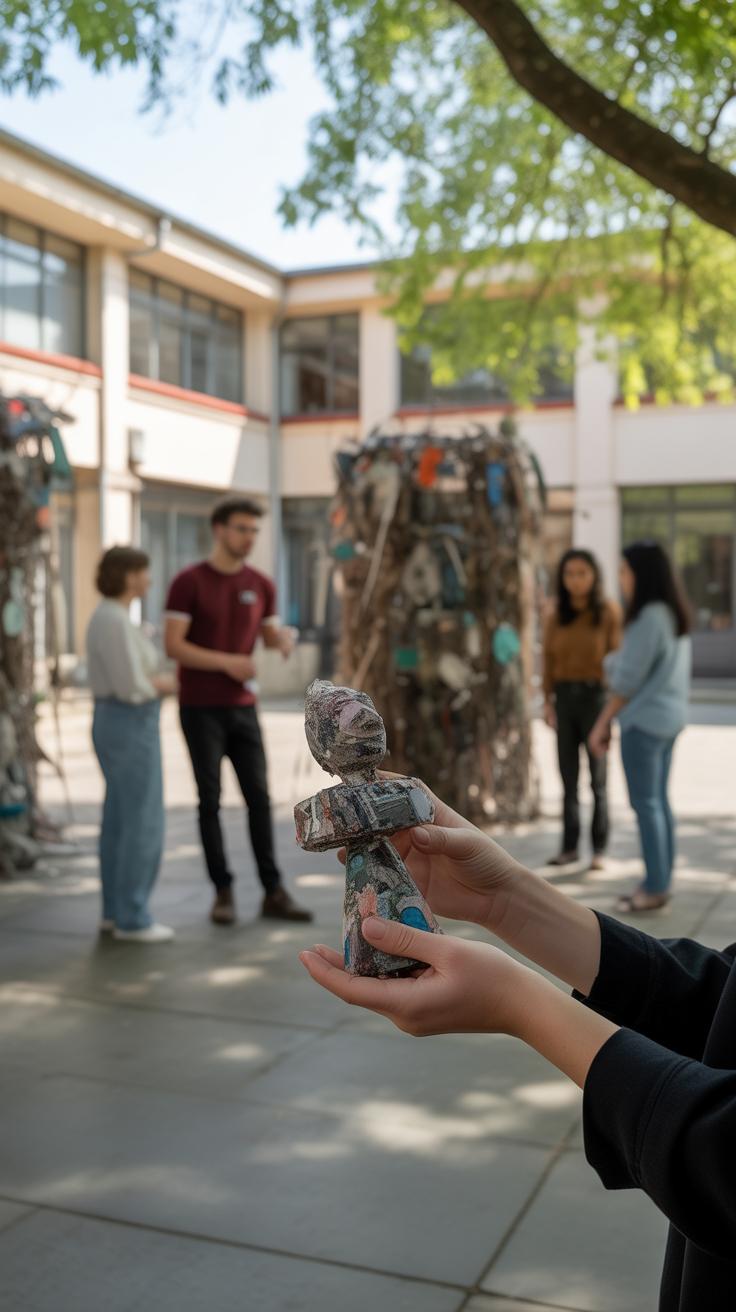
Recycled art is creating artwork by using materials that would otherwise be thrown away. It’s about giving new life to things that might seem useless or forgotten. When you pick up old newspapers, plastic bottles, or scraps of metal to make something beautiful, you participate in this creative process.
This practice is more than just making pretty objects. It helps the environment by reducing the demand for new raw materials. Think about how much energy and water go into producing new paper or plastic. Using what’s already available saves those resources. Plus, it cuts down on trash that ends up in landfills or the ocean.
Simple examples? Maybe a collage made from magazine clippings, a sculpture built from bottle caps, or a picture frame assembled from driftwood. These projects remind us that waste doesn’t have to be useless. It can become art and carry a message at the same time.
What Materials Can You Recycle For Art
You might be surprised at the variety of materials that work well in recycled art projects. Here are a few common ones:
- Paper: Old books, newspapers, cardboard, and magazines are easy to reshape into collages or paper mâché forms.
- Plastic: Bottles, caps, containers, and packaging can be cut, glued, or melted into new shapes.
- Metal: Tin cans, wire, bottle caps, and scrap pieces can add texture, strength, or shine to your creations.
- Wood: Pallets, branches, crates, and even furniture leftovers are great for carving, assembling, or sculpting.
The trick is to look around with fresh eyes. A broken chair can become a unique art piece, or that empty jar might be a perfect canvas. Don’t worry about perfection—imperfect materials often add character to your work.
How Recycling Saves Resources And Reduces Waste
Recycling works by recovering materials from old products and turning them into something useful again. This process cuts the need for raw resource extraction, which often damages ecosystems. It also decreases energy use because transforming recycled materials usually takes less power than creating items from scratch.
When you create recycled art, you’re part of this loop. You prevent items from becoming trash too soon and instead extend their life. This reduces the volume of waste piling up in landfills, which can leak harmful chemicals or attract pests.
It’s not just about waste management; it’s about respect for limited resources. Every bottle you cut up, every scrap of paper you use avoids a small part of environmental strain. Does it always solve bigger problems? Probably not on its own, but it’s a step. And it can inspire others to think differently about what they toss out.
Finding Inspiration And Planning Your Project
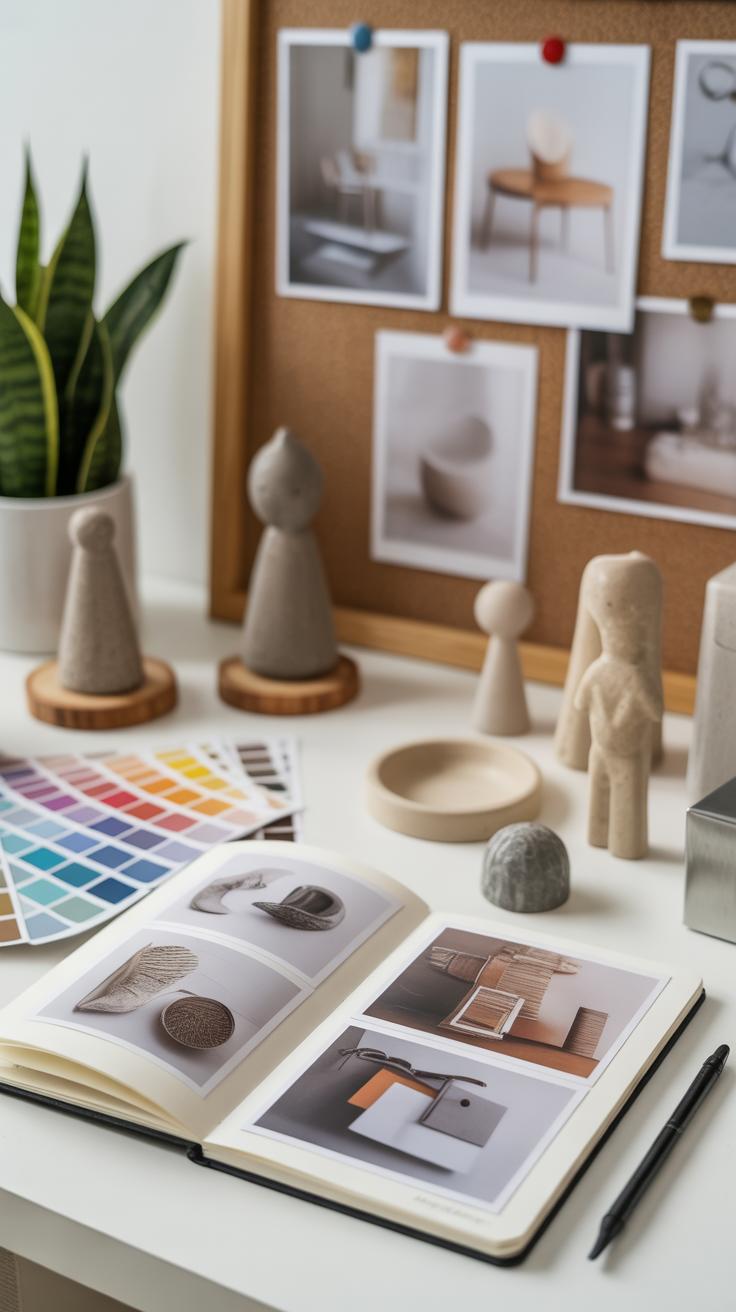
Sources For Recycled Art Ideas
When you’re staring at a pile of old materials, it’s easy to feel stuck. Where do you even start? Sometimes the spark comes from just browsing online galleries dedicated to recycled art. Websites like Pinterest or Etsy showcase thousands of creations made from things people tossed aside. You might find a sculpture made of bottle caps or a mural crafted from reclaimed wood that makes you think, “I could try that.”
Museums and galleries—especially those with local art exhibits—can also offer surprising ideas. I remember once seeing a community art display made mostly from discarded electronics, and it completely changed how I viewed “trash.” Local art fairs or recycled art competitions in your town are other places where creativity meets sustainability.
Don’t overlook everyday surroundings either. Community spaces, parks, or even your neighborhood can hold unnoticed treasures or unusual combinations. Just keep your eyes open.
Choosing The Right Materials And Tools
Once you have a rough idea of what you want to make, it’s time to think about materials. Not all recycled items fit every project. For example, thin plastic might not stand up to structural use, but it’s perfect for layering or collage. Metal scraps offer durability but need tools for cutting and shaping.
Here’s what to consider when picking materials:
- Availability: What do you already have around? It’s tempting to gather everything, but focusing on fewer types can help you stay organized.
- Condition: Some materials need cleaning or prepping before use. Paper soaked in water or rusty metal require attention.
- Safety: Sharp edges, toxic residues, or flammable parts should be avoided or handled carefully.
Tools don’t have to be fancy. Scissors, glue, a craft knife, pliers, and some paintbrushes often cover most needs. You might want a hot glue gun or wire cutters, depending on the project. Think through what you’ll need before you start, because running back and forth can break your flow.
Sometimes narrowing down materials also means deciding how much time you want to invest. Quick fixes versus long-term builds require different planning. Planning isn’t always linear—your project may twist and turn, and that’s okay too. What matters is that you begin with a foundation, however tentative it feels.
Simple Recycled Art Projects To Try At Home
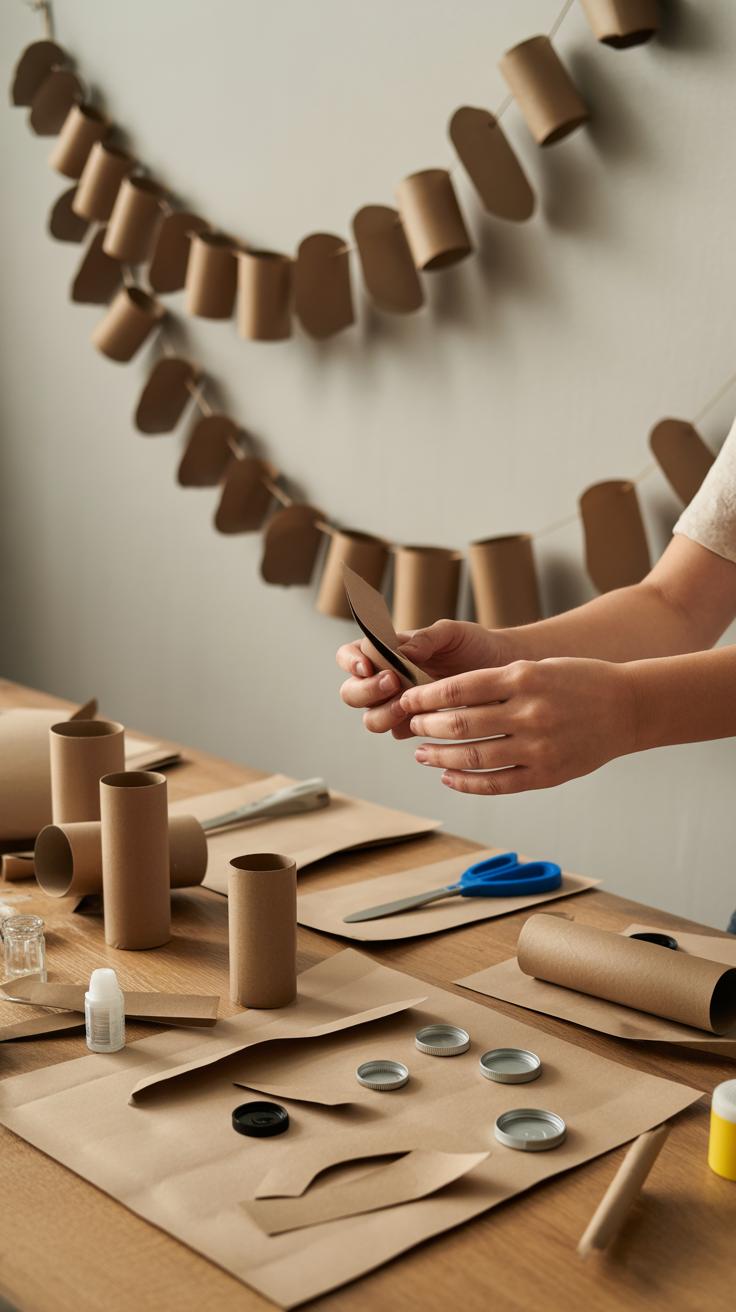
Let’s start with something straightforward: turning plastic bottles into planters. You’ll want to rinse the bottles well—leftover soda or juice can make a mess and attract bugs. Then, carefully cut the bottle in half or create openings on the side for your plants. This step might feel fiddly at first, especially if your scissors aren’t the sharpest, but patience pays off.
Once cut, you can decorate the plastic with paint, markers, or washi tape to add personality. Adding a few drainage holes at the bottom helps avoid soggy roots, though that part is often overlooked. Place some soil inside and pop in your favorite small plant or herb, and there you have it—a planter that’s actually pretty charming.
Now, for wall art made from old magazines or scrap paper. Gather colorful pages, cut them into different shapes or strips, and arrange them on a sturdy board or canvas. You can go for a random collage or try making patterns, like mosaics, by carefully fitting the pieces together.
This project allows a lot of room for improvisation—sometimes you’ll think one color fits, but then you change your mind. Glue everything down once you’re happy with the arrangement, and maybe add a clear coat of glue or even mod podge on top to keep it from peeling away.
Both projects don’t demand special tools and are forgiving of mistakes—you can always repaint or rearrange. What’s nice is that these simple materials, which would often end up tossed, find new life in your home, blending utility and creativity.
Using Wood And Metal In Recycled Art
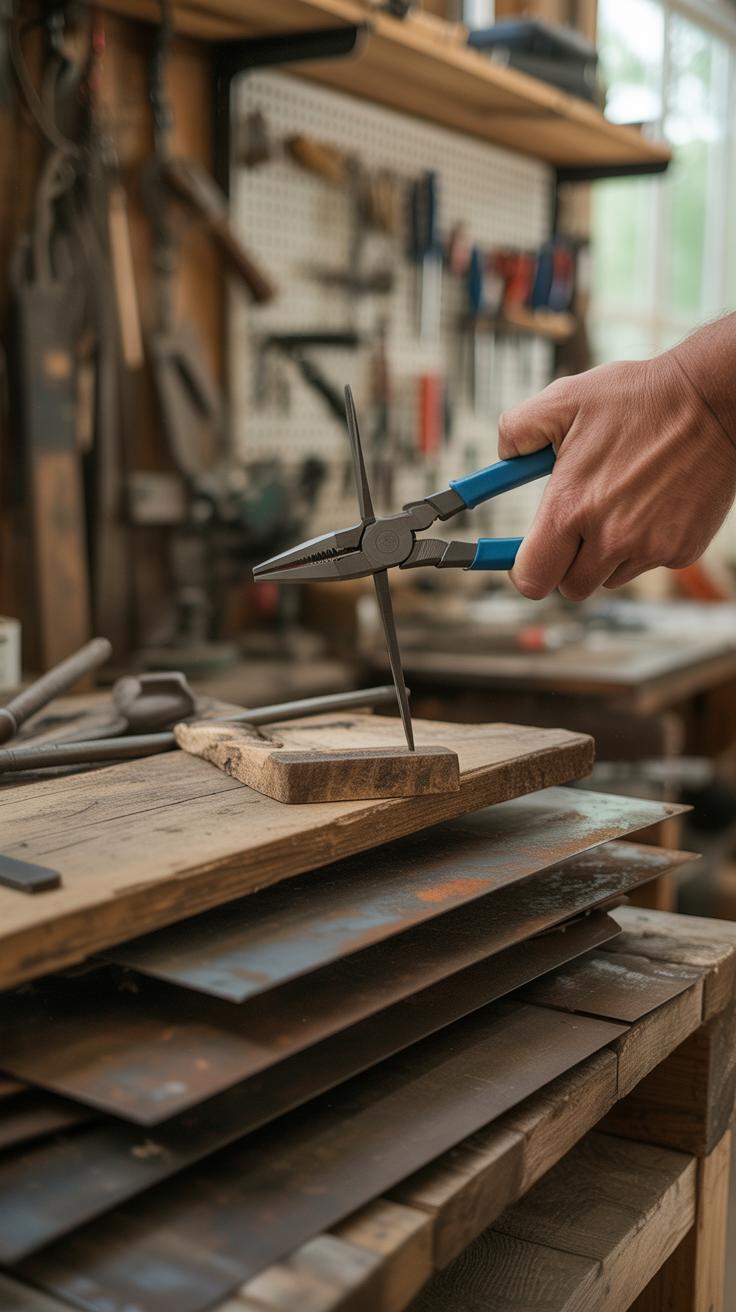
Building Wooden Sculptures From Pallets
Wooden pallets often sit abandoned behind stores or warehouses—maybe you’ve noticed a pile near a local business. These can be goldmines for scrap wood. When picking pallets, look for ones that feel solid and aren’t too weathered or splintered. Avoid treated wood that could release chemicals.
To start a sculpture, first dismantle the pallet carefully using a crowbar or hammer to free the planks. Then, arrange pieces into shapes you like—stacking, angling, or even layering for depth. You can nail or screw the parts together; clamps help keep pieces steady during assembly.
Don’t rush—sanding edges makes handling safer and prevents splinters, which is easy to overlook but worth it. Safety glasses and gloves aren’t just for show either; I learned that after a near-miss with a stray nail while working on a frame once.
Crafting Metal Art From Old Cans And Tools
Metal from old cans or broken tools offers a different kind of charm. Thinner metals like soda cans are easier to cut and bend by hand, while thicker scraps might need pliers or metal cutters. Bending can create curves or petals for flowers, even abstract shapes for sculptures.
Painting metal surfaces usually helps with rust and adds personality. Spray paint or enamel works well—just prep the surface by cleaning off any grime. Joining pieces? Small bolts or strong adhesives work, depending on weight and piece thickness.
Take care cutting or bending metals. Edges get sharp quickly. Wearing gloves and eye protection isn’t just caution; it’s practical. You might hesitate at first, but these simple steps keep the process smoother and safer. Have you tried bending old metal? It’s tricky but satisfying when you finally get the shape right.
Painting And Decorating Recycled Materials
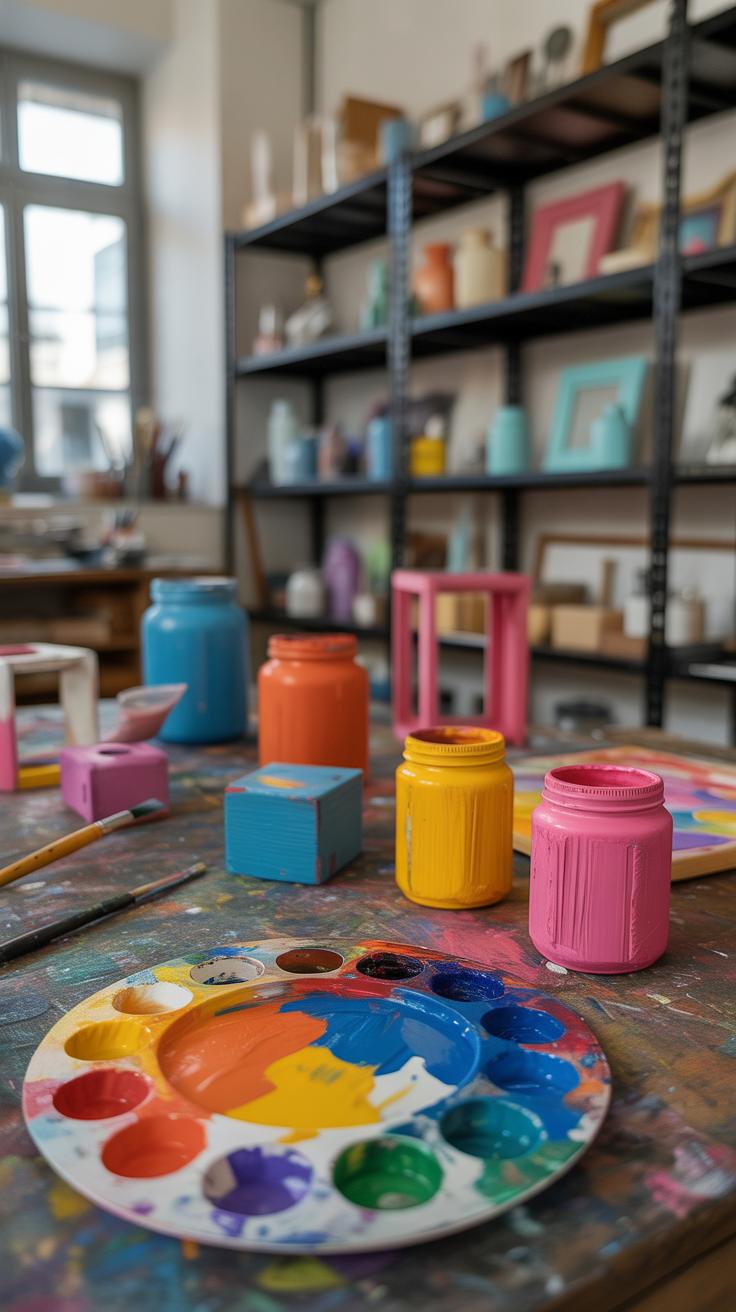
When it comes to breathing new life into recycled items, picking the right paint can make all the difference. Different materials demand different approaches, so it’s good to match paint types carefully.
Best Paints For Recycled Art
For wood, acrylic paints work great—they’re easy to apply and dry fairly fast. You might want to seal wood first with a primer or sealer to avoid blotchiness, especially if the wood is rough or uneven.
Plastic objects can be tricky. Spray paints designed for plastic often give the smoothest finish. If you use regular acrylics here, expect some unevenness unless you prep the surface with a plastic primer or silane-based bonding agent.
Metal surfaces hold oil-based or enamel paints well. Oil-based paints can resist rust better, but they take longer to dry and need good ventilation. Sometimes, layering primer before the topcoat avoids peeling—something you might discover only after a few tries.
Creative Decoration Techniques
There are many ways to jazz up your painted items beyond a single coat of color. I tend to reach for stencils when I want sharp edges or repeated patterns. You can buy ready-made ones or cut your own from cardboard, provides a neat way to add purposeful designs.
Stamping is another fun tactic. Use sponges, carved potatoes, or even old bottle caps dipped in paint to create texture and rhythm on surfaces. It’s less predictable than stenciling, but sometimes those little imperfections make the piece more interesting.
Layering colors is worth trying too. Think of it as painting in stages: applying one color, letting it dry, then brushing or dabbing a contrasting hue on top. This can give your project depth or a weathered look. I once tried that on a metal tin and liked the rusty, aged effect it achieved.
Overall, how you decorate recycled materials depends on your vibe. Do you like clean and geometric, or loose and expressive? Either way, play around, experiment, and don’t worry too much about mistakes—they can push your art in unexpected directions.
Displaying And Sharing Your Recycled Art
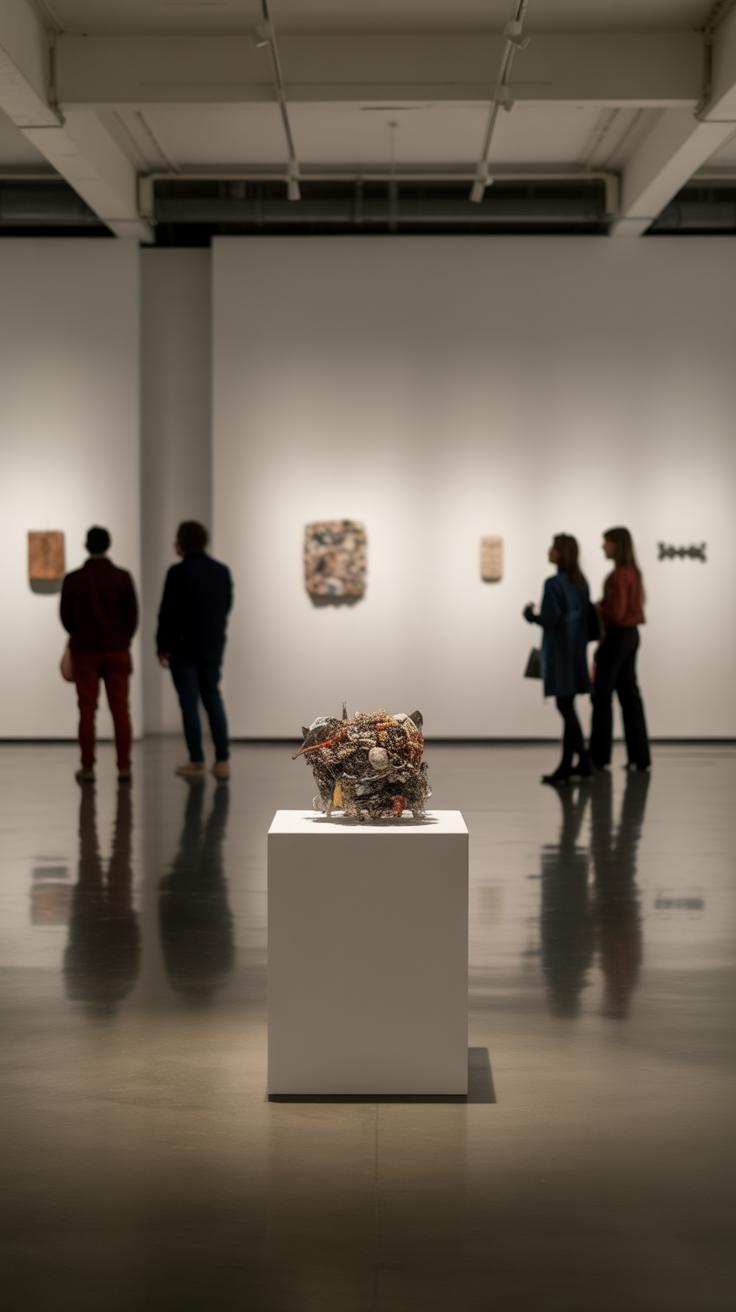
Choosing Places To Display Your Art
Finding the right spot to showcase your recycled creations can be surprisingly tricky. Think about where you spend the most time at home—maybe a hallway wall or a bookshelf could use some personal flair. If you’re working with materials that don’t handle moisture or sunlight well, keep those pieces indoors. On the other hand, some art, like sculptures made from treated plastics or metals, can brave the outdoors. If you opt for outdoor display, try to protect your work with a clear sealant or varnish to help it withstand the elements.
Don’t overlook everyday spaces. Kitchen nooks, entryways, or even a spot by the window where natural light highlights textures—these places can bring your recycled art to life. And oh, standing frames or display shelves can give three-dimensional work a chance to shine without risking damage. Sometimes, shifting your collection around keeps things fresh and offers new perspectives.
Sharing Your Work Online And Locally
When it comes to sharing, snapping good photos is key. Try taking pictures in natural light without cluttered backgrounds—the simpler the setting, the better your art stands out. Experiment with angles to capture textures and details. Often I find that a slightly off-center shot feels more engaging than a perfect straight-on photo.
Social media platforms provide easy access to a wider audience. You might post step-by-step photos, or short videos explaining what inspired a piece. Local art shows or community centers are great places to connect face-to-face with other creatives and collectors. Even small neighborhood events can spur surprising conversations about sustainability and creativity. You might wonder if it’s worth it? Usually, sharing sparks new ideas and motivates you to keep creating, which, at least for me, is the whole point.
Teaching Kids Recycled Art Projects

Getting kids involved with recycled art can be really rewarding—and yes, fun. Watching them turn something old or tossed aside into a colorful creation is almost like seeing their imagination stretch and grow. But you’d want to keep things safe and simple at first. Kids can be curious in not-so-careful ways.
Here are some easy projects that usually work well:
- Paper weaving using strips from old magazines or scrap paper. It’s simple, needs little supervision, and kids love the colorful patterns.
- Painting smooth rocks gathered from around the yard or park. Non-toxic paints make this safe—and they can create anything from ladybugs to smiley faces.
- Making collages from old greeting cards, fabric scraps, or cereal boxes. It’s quick and allows plenty of room for creativity.
- String art using cardboard scraps with safe plastic needles—this can teach patience as they thread the yarn.
Of course, checking the materials beforehand helps avoid sharp edges or things that might cause allergies. You might find yourself reminding them a few times, but hey, that’s part of the process.
Beyond just making stuff, recycled art introduces a way to think about where things come from and where they could go instead of the trash bin. When kids see a bottle cap becoming part of a sculpture or juice boxes turning into puppets, it nudges them to rethink waste.
It’s not just about art; it’s learning respect for the environment without feeling like a lecture. Sometimes they even ask questions about why we don’t just throw everything away, and that’s when the conversation about sustainability begins naturally. Does that make sense?
Joining The Recycled Art Community
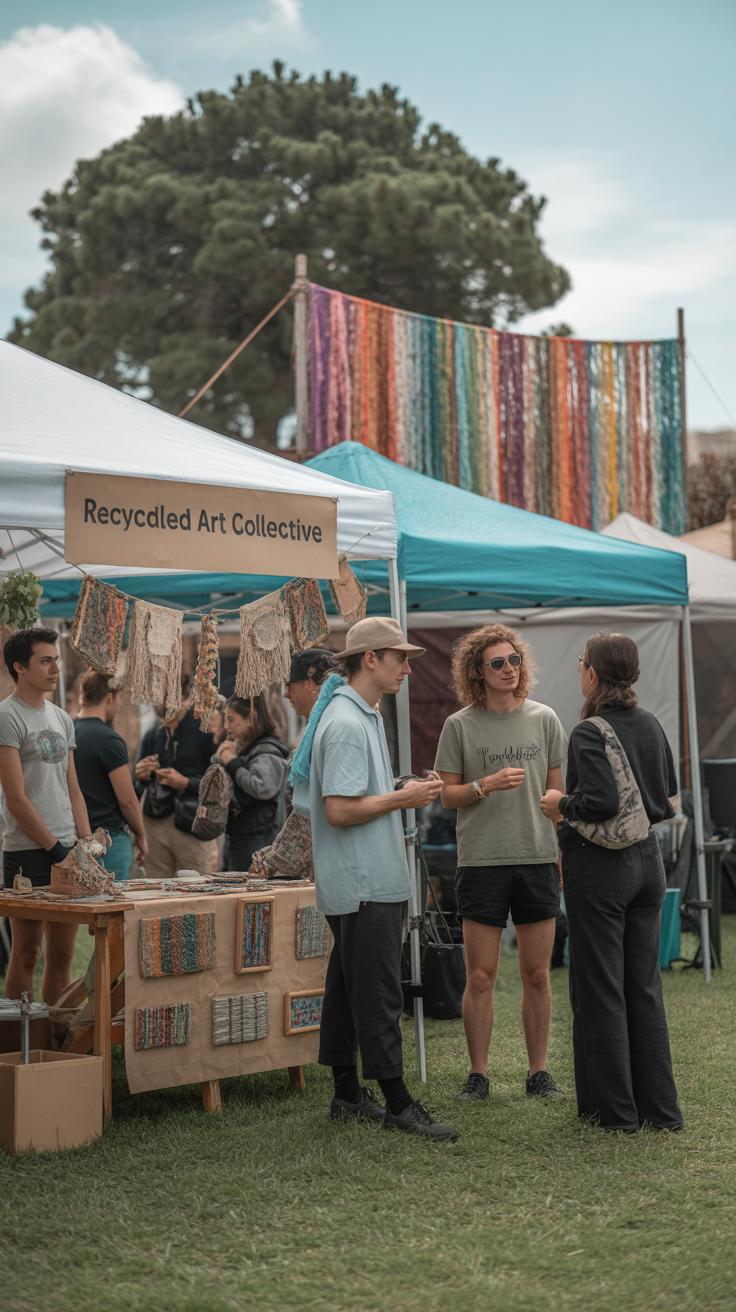
Connecting with others who share your interest in recycled art can open up a lot of creative doors. It’s more than just swapping materials or showing off finished pieces. When you share ideas, you get fresh perspectives that could completely change how you approach your art. Sometimes a simple conversation sparks a new project or helps solve a tricky design problem you’ve been wrestling with.
Collaboration can also introduce you to new techniques or unusual recycled materials you might not have discovered on your own. Plus, it keeps the process from feeling isolated. I’ve noticed my own motivation jumps when I’m part of a community, even if it’s just online.
Online Groups And Forums To Join
The internet hosts many hubs where recycled art enthusiasts gather. Here are a few places you might want to check out:
- Reddit’s r/RecycledArt – a space for sharing projects and asking for advice.
- Facebook groups like “Upcycled Art Creators” and “Eco-Friendly Art Makers” where people post tutorials and inspiration.
- Instructables.com – not strictly for recycled art but plenty of step-by-step DIY projects using recycled materials.
- Instagram communities under tags like #recycledart or #upcycledcrafts, where you can find artists worldwide.
You might feel overwhelmed at first, but don’t hesitate to jump in. Most members are friendly and happy to help beginners.
Attending Workshops And Events
Local workshops or art fairs focused on recycled materials give you hands-on experience and often the chance to meet people face-to-face. Some community centers, libraries, or art studios offer occasional classes—sometimes inexpensive or free—that focus on techniques for recycled crafts. If you search terms like “upcycled art workshop” along with your city or town’s name, you might find a few options.
Events like eco-art festivals or sustainability fairs often include displays or contests featuring recycled art. Attending these can expose you to new ideas and give you an opportunity to show your work, maybe even get some feedback. Plus, chatting with artists there tends to be easy and inspiring.
Have you ever been to one of these events? They don’t have to be formal to be valuable. Sometimes a casual meet-up over recycled sculptures or paintings starts something meaningful—maybe even a collaboration you hadn’t expected.
Conclusions
Recycled art is a great way to show your care for the environment. It saves materials and turns waste into something new and useful. By making your own recycled art projects, you add creativity to your life and help reduce pollution.
Start small with easy projects using things at home. Each art piece you make helps the planet and shows others how fun and important sustainability is. Your creativity makes a difference.


